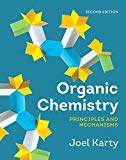
Concept explainers
Interpretation:
The free energy diagram for the
Concept introduction:
An
The free energy diagram involves the Gibbs free energy of the species involved in the reaction, which is plotted as a function of the reaction coordinate. The intermediate occurs at a local minimum in energy along the reaction coordinate. The overall reactants are on the far left, the overall products are on the far right.
Want to see the full answer?
Check out a sample textbook solution
Chapter 8 Solutions
Organic Chemistry: Principles and Mechanisms (Second Edition)
- What is the name of the following compound? SiMe3arrow_forwardK Draw the starting structure that would lead to the major product shown under the provided conditions. Drawing 1. NaNH2 2. PhCH2Br 4 57°F Sunny Q Searcharrow_forward7 Draw the starting alkyl bromide that would produce this alkyne under these conditions. F Drawing 1. NaNH2, A 2. H3O+ £ 4 Temps to rise Tomorrow Q Search H2arrow_forward
 Organic Chemistry: A Guided InquiryChemistryISBN:9780618974122Author:Andrei StraumanisPublisher:Cengage Learning
Organic Chemistry: A Guided InquiryChemistryISBN:9780618974122Author:Andrei StraumanisPublisher:Cengage Learning
